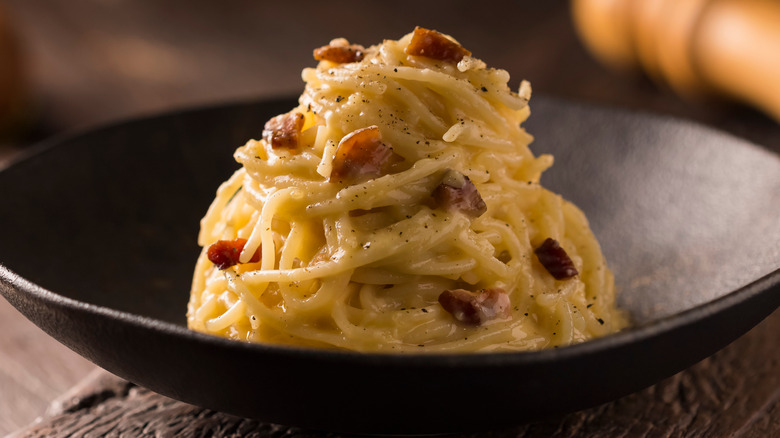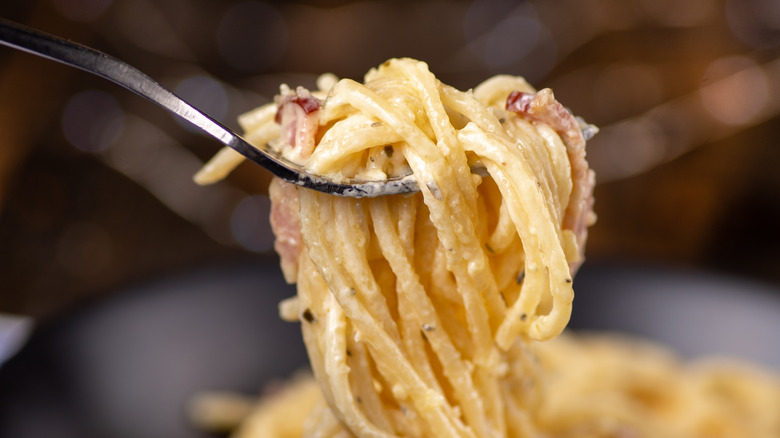Why You Shouldn't Be Adding Cream To Your Carbonara
Carbonara is a creamy, peppery, and simple Roman pasta dish. Really, a classic carbonara has nothing more than egg yolks, Pecorino Romano, guanciale, black pepper, and pasta. There is nothing wrong with riffing on a classic, but for many Italian chefs, the beauty of carbonara lies in letting simple, high-quality ingredients shine. Famed chef Mitch Orr has some serious thoughts on the topic, telling Vice saying that it is passable to substitute funky Romano for the milder Parmigiano Reggiano. In his view, leaner and more simply seasoned pancetta can step in for fatty, herby guanciale in a pinch, but that is where his flexibility ends. Under no circumstances should cream be a part of carbonara. While Orr notes that this can create a tasty pasta, it's just not carbonara. It mutes the interplay of all the flavors, and coats the pasta in a clumsier sauce.
It is understandable why many people make carbonara with cream. Working with raw egg yolks can be fussy, and cream is more stable. Using cream to make a pasta dish doesn't require the technique that a creamy egg sauce does. Plus, lots of famous chefs have taken the idea of carbonara and made some jumps. Our riff on Rachael Ray's carbonara recipe includes pancetta, egg yolks, and Romano cheese, but it also has Italian sausage, cream, kale, and white wine. Last year, the Pasta Queen was in shambles over Gordon Ramsay's carbonara that used bacon, Grana Padano cheese, garlic, mushrooms, creme fraiche, and more.
Just because there shouldn't be cream in pasta carbonara doesn't mean it's not creamy
The creaminess of classic carbonara comes from the emulsion of egg yolks, cheese, pasta water, and the rendered fat from the guanciale. Typically, the guanciale is sauteed first, then removed from the pan with the leftover fat reserved. Then, the egg and grated cheese are beaten together with lots of black pepper. The final combination of the pasta — usually a long noodle like spaghetti — with the remaining ingredients happens either in the warm pan with the stove on low heat or off, or in a separate mixing bowl. When everything combines with the hot pasta and pasta water, the cheese melts and the eggs transform into a luscious, silky sauce. No cream needed.
In his Vice article on carbonara, chef Mitch Orr captures the beauty of this delectable dish perfectly: "The secret is balance and richness. Rich egg yolk; umami-laden cheese; salty, porky fattiness; the cutting heat of freshly-cracked pepper; and perfectly al dente pasta. Why upset that balance?"

